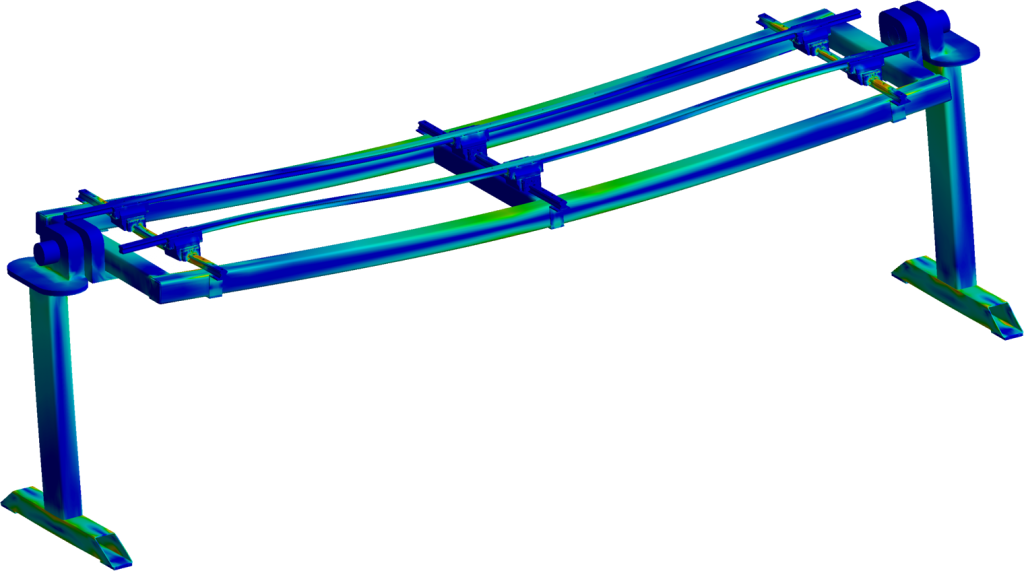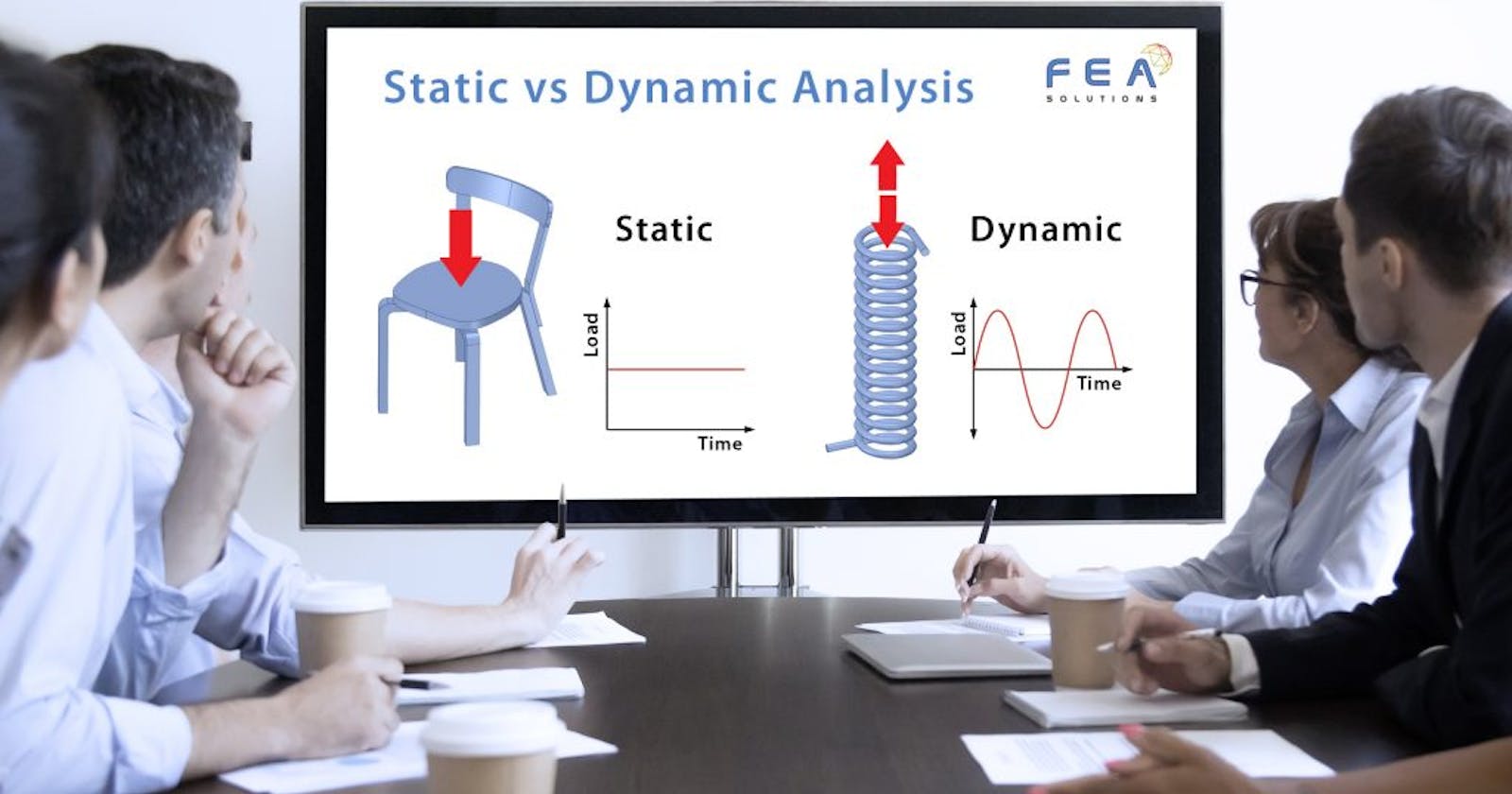Static Analysis Vs Dynamic Analysis in Finite Element Analysis (FEA)
Understanding Static and Dynamic Analysis: Key Components of Finite Element Analysis
Table of contents
Finite Element Analysis (FEA) is a formidable asset in the engineer's toolbox, revolutionizing how we model and understand complex engineering problems. The two pillars of FEA are static and dynamic analysis, each shedding light on the system's response under varying conditions. Here, we delve into the key characteristics of each, providing concrete examples to clarify the concepts.

Static Analysis
In static analysis, the forces exerted on the system are time-invariant, making them constant for the duration of the analysis. This type of analysis is often applied in situations where loads are steady and slow-changing. For example, when analyzing a bridge, a static load could be the weight of the cars and trucks that it carries daily. These forces induce stress and deformation in the structure. However, since the load remains unchanging, the stress and deformation levels also stay constant.

Simplifying the equation of motion to Stiffness x Deformation = External Force, static analysis overlooks acceleration and velocity as they are always zero. This simplification leads to less computational resource requirements, translating to quicker solution times and minimal memory or disk space usage.
Interestingly, some dynamic problems can be treated as static if certain conditions are met. For instance, a single DOF system vibrating at a frequency that's one-third of its natural frequency can be analyzed using static analysis.
Nevertheless, the inability of static analysis to account for time-varying effects limits its application, especially in scenarios where structures are subjected to both static and dynamic loads.
Dynamic Analysis
Dynamic analysis provides a more comprehensive analysis, accommodating loads that vary with time. This methodology is crucial for systems subjected to forces like impulses, shocks, or even cyclic loads. A typical example is a skyscraper subjected to wind forces, which fluctuate with time. Similarly, a car's suspension system experiences varying forces as it moves on uneven terrain.

Unlike static analysis, dynamic analysis predicts the system's response (stress, displacement, etc.) at any time point. As the structure has mass and is subjected to dynamic loading, it encounters the inertia effect. This necessitates the application of the full equation of motion: Mass x Acceleration + Damping x Velocity + Stiffness x Deformation = External Force.
However, the added detail comes with a cost. Dynamic analysis tends to be more computationally intensive, leading to longer solution times and greater memory or disk space consumption.
Despite these challenges, dynamic analysis offers a richer understanding of real-world scenarios, making it invaluable in numerous engineering applications.
Wrapping Up

While structures are often studied under static loading, real-world scenarios frequently involve dynamic loading as well. Therefore, a comprehensive understanding of both static and dynamic analysis methodologies is imperative to accurately predict a system's behavior under various conditions.
In a dynamic analysis, the inertial loads developed by the system due to acceleration are taken into account. Static analyses don’t consider inertia.
Mathematically, the difference between static and dynamic analysis is that in a static analysis, only the stiffness matrix of the FEA model is solved.
In a dynamic analysis, in addition to the stiffness matrix, the mass matrix (and damping matrix, if not zero) is solved as well. That is one of the reasons why dynamic analyses require more computational time than static analyses, for the same structure.
For dynamic analysis, the loads can be in either the time domain or in the frequency domain.
Our team of experts specializes in providing design and FEA solutions for industrial projects, covering all types of nonlinearity. Should you require our expertise, please reach out via sharmavishal929@gmail.com.
Additionally, if you're interested in the day-to-day workings of a professional CAE/FEA Analyst and how they manage client projects independently, stay tuned for more insightful content.
In the vast world of FEA, understanding when to deploy static and dynamic analysis is a key competency. Leveraging these methods effectively can significantly enhance the accuracy and efficiency of your engineering projects.
